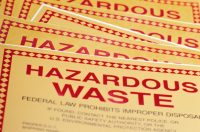Archives
Maintaining Industrial Stormwater No Exposure Conditions
The intent of the No Exposure Exclusion is to provide industrial facilities regulated under the National Pollutant Discharge Elimination (NPDES) program, whose industrial activities and materials are completely sheltered, with a simplified method for complying with the Clean Water Act. Facilities that qualify for the No Exposure Exclusion are not required to be covered by […]
Check Your Way to a Better PPE Program
This checklist can assist with PPE-related duties and help ensure that your PPE program complies with regulations and protects employees from hazards. Survey work areas for hazards and potential hazards such as: Chemical exposures Tool and equipment hazards Pinch points Sharp objects Rough surfaces Falling or dropped objects Bump hazards to heads and toes Respiratory […]
GAO Looks At Pipeline Regs
How to Plan for Successful Safety Training
Well-planned safety training is successful training that meets goals and prepares employees to work safely. Here are some suggestions. The first step in planning safety training is assessing needs. To do that, you have to ask a number of critical questions. For example: Is training required by federal or state regulations for any operations performed […]
Can a TSDF Send an Electronic Return Manifest?
Confined Space Emergencies Do’s and Don’ts
Do your authorized workers know their role in a confined space emergency? Use the information in today’s Advisor to train them on what to do and what not to do if a confined space emergency occurs in your facility. The material in today’s Advisor comes from BLR’s popular 7-Minute Safety Trainer session, "Confined Space Emergencies—Know […]
More About Petroleum USTs
Stop Workplace Slips and Trips
Slips and trips are an all-too-common occupational hazard estimated to cause hundreds of thousands of accidents and injuries on the job every year. The chief cause of slips is (no surprise) a slippery surface, compounded by improper footwear. There are two types of slips: In the first, the heel of the forward foot contacts the […]






